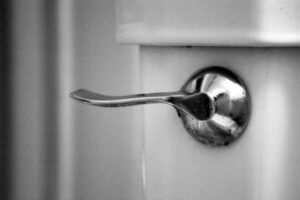Clean the Toilet Naturally: The Toilet Volcano!

Cleaning the toilet is not the sexiest housekeeping duty, but the toilet volcano method almost makes this mundane cleaning task a little bit fun. Don’t worry – there are no harmful chemicals and no fancy beakers required to make this green cleaner.
When it comes to cleaning the house, the bathroom is definitely my least favorite room. Not only is scrubbing the toilet just plain tedious, I feel like bathroom cleaning supplies are the most chemical-laden and the smelliest. Products like those blue toilet-cleaning cakes or that gel that you squeeze under the lid can definitely make things easier, but they’re also full of ingredients like bleach that are terrible for your indoor air quality and not so hot for the environment when you flush them down.
Natural cleaners take those harmful chemicals out of the equation, but a common complaint about homemade cleaners is that while they still get the job done, they require a lot more effort – especially scrubbing – than the chemical variety. Not so with the toilet volcano! Let ‘er rip; give it some time to do its thing, and gross toilet stains wipe away easily with your scrubby brush, no hard scrubbing required.
I recommend starting the volcano as the first thing you do when you’re cleaning the bathroom, so the fizz has time to work. Get this started, and by the time the sink, tub, and floor are clean, you’ll be good to go. This green cleaning recipe is part natural cleaner, part elementary school science project.
How to Make the Toilet Volcano
You will need:
- 1/2 cup baking soda
- 1/2 cup white vinegar
Combine the vinegar and baking soda right in the toilet bowl, and close the lid while you clean the rest of the bathroom. Grime wipes away easily with the toilet brush. If you’re dealing with a particularly funky bowl, you can up the amounts to 1 cup each of baking soda and vinegar. Whether you use the regular recipe or double it, just don’t forget to close the lid!
Do you have a favorite green cleaning recipe that works as well as its chemical cousins? I’d love to hear your ideas in the comments!
Image: Genista










